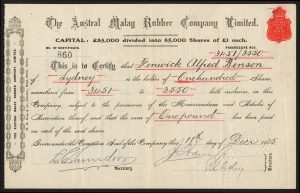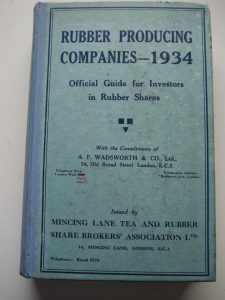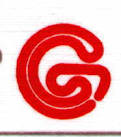
Background
In the early phase of the rubber industry in early 1900s, investors and speculators floated companies, which owned rubber estates or rubber lands in Malaya, on the London Stock Exchange. Their estates in major states like Selangor and Negri Sembilan had English-sounding names. Some of the English-sounding names included:
- Aranlife
- Balgownie
- Beaumont
- Blackwater
- Braemer
- Broome
- Brown Comet
- Caledonian
- Carey Island
- Castlefield
- Coalfields
- Cullerlie
- Colwall
- Devon
- Didsbury
- Easrnor
- Ebor
- Edinburgh
- Effingham
- Emerald
- Galloway
- Glenmarie
- Golconda
- Golden Hope
- Haron
- Harfenden
- Hawthornden
- Haytor
- Highland & Lowlands
- Holmwood
- Inch Kenneth
- Kent
- Killinghall
- Lambourne
- Ledbury
- Lunderston
- Madingley
- Merton
- Midlands
- Monmouth
- New Amherst
- Newbury
- North hammock
- Paradise
- Pilmoor
- Reading
- St Andrew’s
- Seafield
- Seaport
- Sedgeley
- Shelford
- Sione
- Strathmore
- Strathnairlie
- Tremelbye
- Vallambrosa
- Wardieburn
- Waterfall
- West Country
We remember many of names existed until in the 1970s, while other estates were absorbed by larger companies. With a shipping travel time of about 40 days between London and Singapore in early 1900s, the owners of the rubber estates in London would need local companies or local managers to oversee their rubber estates in Malaya.
Enter the Agency Houses
The early rubber planters used the fund, raised through the flotation of public companies on the London Stock Exchange, to develop their rubber estates. However, the costs involved in opening up new rubber plantation on a scale dictated by demand lay well beyond the means of almost all rubber planters. In addition, the rubber planters had to wait for at least five years before the rubber trees could be tapped for latex.

Those early rubber planters had to seek capital from other sources, namely the established merchant houses based in Singapore and Penang, which have been operating since 1800s. The established merchant houses had the right contacts on the local and overseas financial market. It also involved experiences of business organizations and management techniques, of which most planters were woefully lacking, and the know-how for shipping and marketing rubber on the London market.
The big merchant houses which started in early 1800s, eventually dominated the rubber industry which came to be known as agency houses. By the end of the second decade of twentieth century, the agency houses had established itself in a dominating position in the rubber plantation industry and later in the oil palm industry. However, it took a generation to consolidate their position. During this period, the early rubber planters made it to the boardroom of rubber companies which were listed on the London Stock Exchange and the rubber speculators from the City of London itself died off and were replaced by the nominees of the agency houses.

The major agency houses that existed in 1960s included the following:
| Agency Houses | No. of Companies | Number of Estates | Planted Areas (acres) |
| Harrison Crosfield | 42 | 111 | 231,180 |
| Guthrie | 22 | 39 | 182,800 |
| Boustead-Buttery | 37 | 58 | 121,870 |
| REA-Cumberbatch | 37 | 55 | 97,560 |
| T. Barlow | 19 | 42 | 102,440 |
| Sime Darby | 23 | 30 | 73,900 |
| Oriental Estates | 14 | 19 | 55,140 |
| Plantation Agencies | 10 | 29 | 48,040 |
| Whittal | 22 | 28 | 45,210 |
| Harper Gilfillan | 16 | 18 | 35,560 |
| Ethelburga Agencies | 1 | 9 | 27,860 |
| J Warren | 16 | 21 | 26,070 |
| SOCFIN | 6 | 10 | 62,150 |
| East Asiatic | 4 | 4 | 21,100 |
| Unitac | 7 | 12 | 20,260 |
| Other Agencies | 5 | 7 | 21,040 |
Source: Zorn Leigh Hunt, Manual of Rubber Planting Companies, 1960, and Strait Times Directory, 1962. Quoted in Fryer (1964)

There were several differences between the pattern of interests of the two largest agency houses, Harrison Crosfield and Guthrie. The first was by far the larger. Guthrie, however, appeared a much more specialized organization: it controlled relatively few companies and fewer estates than smaller rivals. The properties under its management, however, were of very large size, including both the largest rubber and oil palm estate in Malaysia. Guthrie had also a leading position in the cultivation of oil palm.
By the 1980s, the agency houses were bought over by Malaysian interests Several names such as Sime Darby, East Asiatic and Boustead are still operating under the new Malaysian owners until today.
As a business historian, we appreciate and value the contribution of individuals who managed these agency houses and created a plantation industry from the jungles of Malaya in the early 1900s.
Our thanks to Mr. Lampard, Mr. T. Barlow, Mr. Boustead Brothers, Sir John Hay, Mr. Money, Sir J. Anderson and others.
Reference:
- J. M. Tate. The RGA History of the Plantation Industry in the Peninsular Malaysia. Oxford University Press, Kuala Lumpur, 1996.